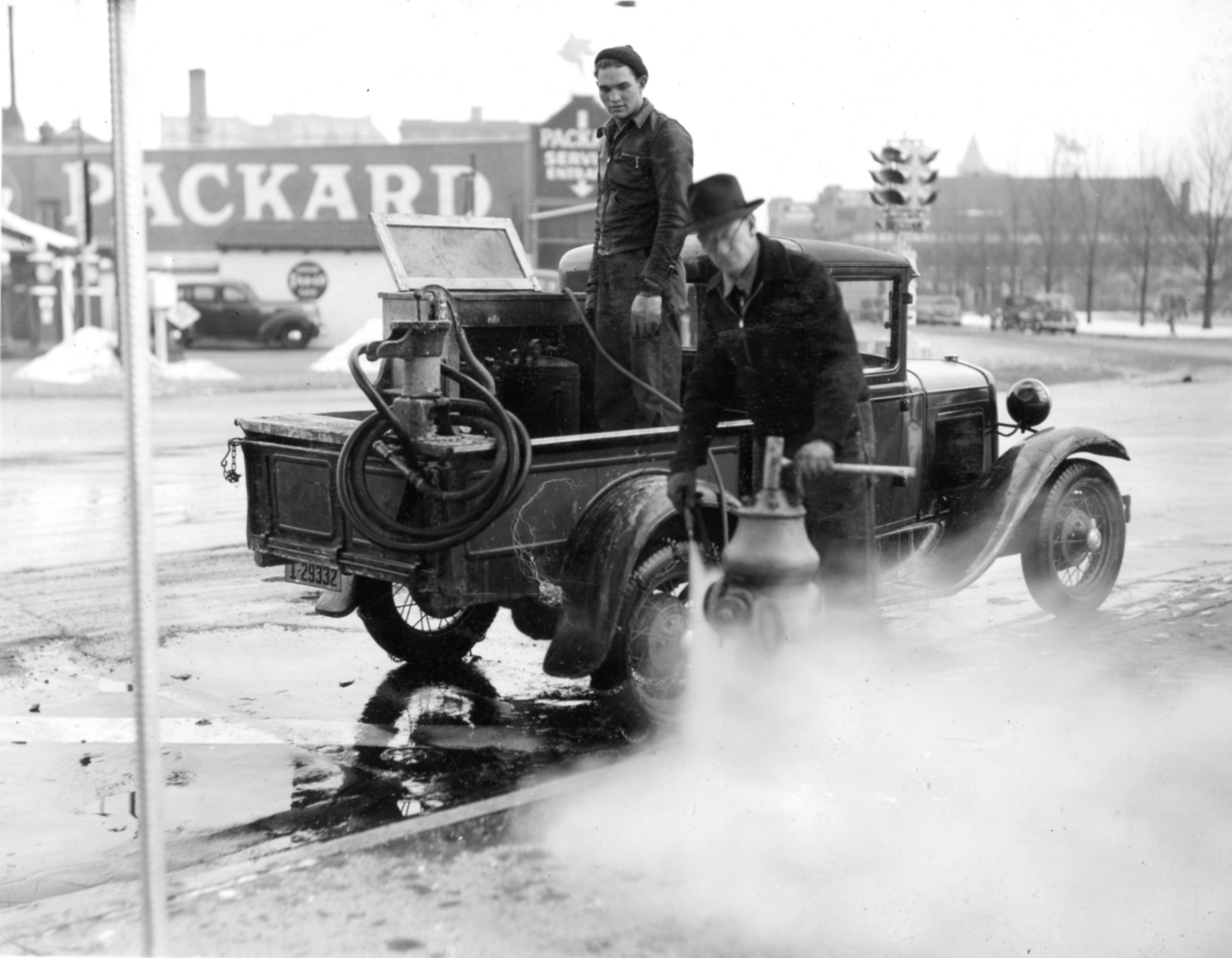
Crucial to fire protection and beloved by dogs
As we head into the coldest months of the year, we present to you a 1940 picture of two Denver Water employees thawing out a Gaskill fire hydrant with steam.
Gaskill hydrants, such as the one in the picture, were installed in Denver in the 1890s. They incorporated a dry barrel draining system to prevent water from freezing inside the pipe connecting to the fire hydrant.
These days, Denver Water proactively uses propane burners when storms are forecast to prevent hydrants from freezing as part of its regular maintenance.
Most of the 21,000 fire hydrants that Denver Water maintains throughout the Denver metro area today are yellow and installed in lawns or sidewalk easements. Many people plant flowers or shrubs around them, although a city of Denver ordinance requires at least five feet of clearance to ensure the hydrant is reachable for both operation and maintenance.
Some hydrants in Denver Water’s service area are painted purple.
But no, they are not purple for the Colorado Rockies (except during Rocktober). The purple hydrants hold water from our recycling plant. Some of our commercial customers use recycled water for irrigation, to power their cooling systems and even prepare for emergencies.
In the movies, you’ve probably seen a vehicle collide with a hydrant causing water to shoot into the air.
That’s the movies.
The reality is that newer versions of the Gaskill fire hydrant used by Denver Water include an underground valve to shut off the flow of water and help protect the supply line from damage. If a collision were to happen and disconnect the hydrant from the underground pipe, the valve would shut off and hold the water in the pipe, preventing water from spraying into the air.
Hydrants are flushed at dead ends, cul-de-sacs and pressure zone boundaries in the system to make sure water moves regularly through the distribution system. This helps to keep the water fresh.
Denver Water also collects water samples from fire hydrants, so we can test the quality throughout the distribution system.
For more information, here’s a Q&A on flushing water mains.

